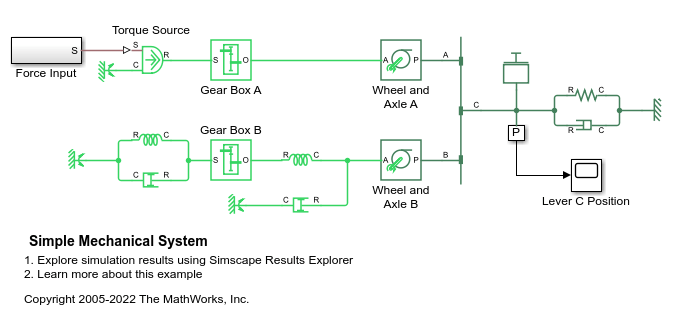Rotational Spring
機械回転システムの理想的なバネ
ライブラリ:
Simscape /
Foundation Library /
Mechanical /
Rotational Elements
説明
Rotational Spring ブロックは、次の方程式で記述される理想的な機械回転線形バネを表します。
ここで、
T はバネを通じて伝達されるトルクです。
K はバネ定数です。
φ は相対変位角度、つまりバネの変形です。
φinit はバネの予備巻線です。
φR と φC はそれぞれ端子 R と端子 C の絶対角変位です。
ω は相対角速度です。
t は時間です。
このブロックの正方向は端子 R から端子 C です。つまり、端子 R の速度が端子 C の速度より大きい場合、ブロックは R から C にトルクを伝達します。
変数
シミュレーションの前にブロック変数の優先順位と初期ターゲット値を設定するには、ブロックのダイアログ ボックスまたはプロパティ インスペクターの [初期ターゲット] セクションを使用します。詳細については、ブロック変数の優先順位と初期ターゲットの設定を参照してください。
ノミナル値は、モデル内で予想される変数の大きさを指定する方法を提供します。ノミナル値に基づくシステムのスケーリングを使用すると、シミュレーションのロバスト性が向上します。ノミナル値はさまざまなソースから得られます。その 1 つがブロックのダイアログ ボックスまたはプロパティ インスペクターの [ノミナル値] セクションです。詳細については、ブロック変数のノミナル値の変更を参照してください。
例
端子
保存
パラメーター
拡張機能
バージョン履歴
R2007a で導入


